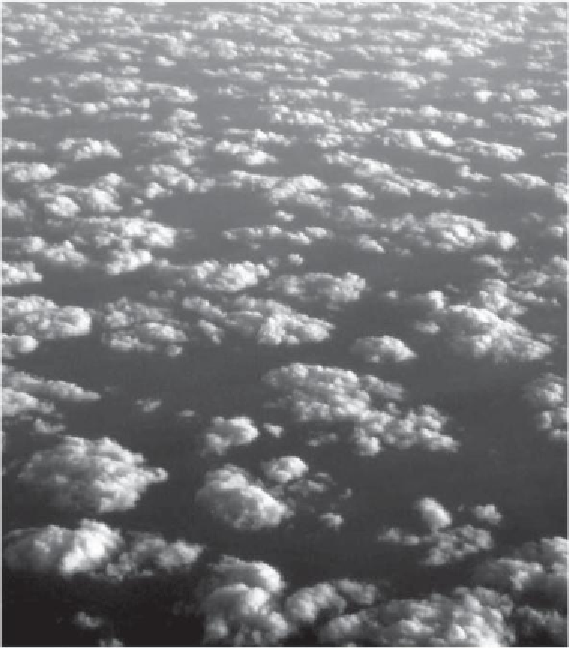Environmental Engineering Reference
In-Depth Information
Figure 6.7. Aerial view of an organized cloud system.
and investigated pattern formation induced by the switching between states 1 and 2
[Eqs. (
6.11
)and(
6.12
)]. As discussed in Section
5.8
, each of these dynamics (
6.11
)
is unable to generate patterns. However,
Buceta and Lindenberg
(
2002a
) noticed that
the random switching between these two “disordered” states may lead to order and
pattern formation, similar to the case of paradoxical games (or
Parrondo paradox
),
whereby the alternation of two losing games may lead to the emergence of a winning
one (
Harmer and Abbott
,
1996
). If the system is in states 1 and 2 with probabilities
P
and 1
−
P
, respectively, the dynamics resulting from the random switching between
these states can be expressed as
∂φ
(
r
,
t
)
2
k
0
)
2
=
φ
,
ξ
+
φ
,
−
ξ
−
∇
+
φ
,
,
(6.13)
f
1
[
(
r
t
)]
dn
(
t
)
f
2
[
(
r
t
)](1
dn
(
t
)]
D
(
(
r
t
)
∂
t
where
ξ
dn
(
t
) is a DMN assuming values 0 and 1 with probability 1
−
P
and
P
, respec-
tively [hence
P
]. As noted in Section
5.8
in the case of random switching
between two Turing's models, if the rate of random switching is relatively fast with
ξ
dn
(
t
)
=

Search WWH ::

Custom Search